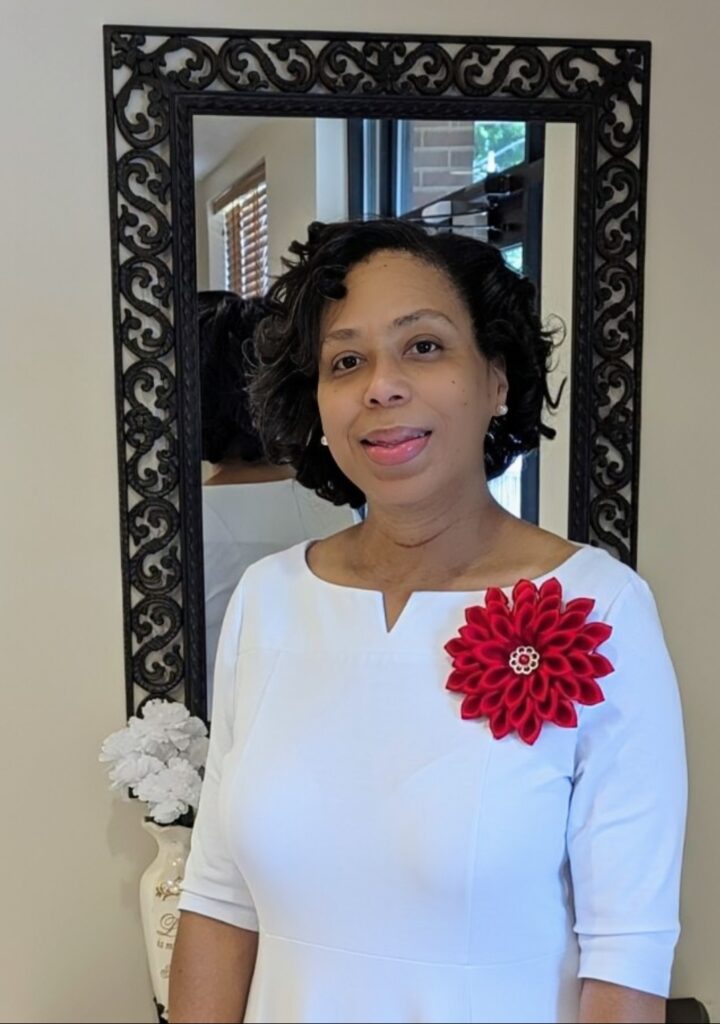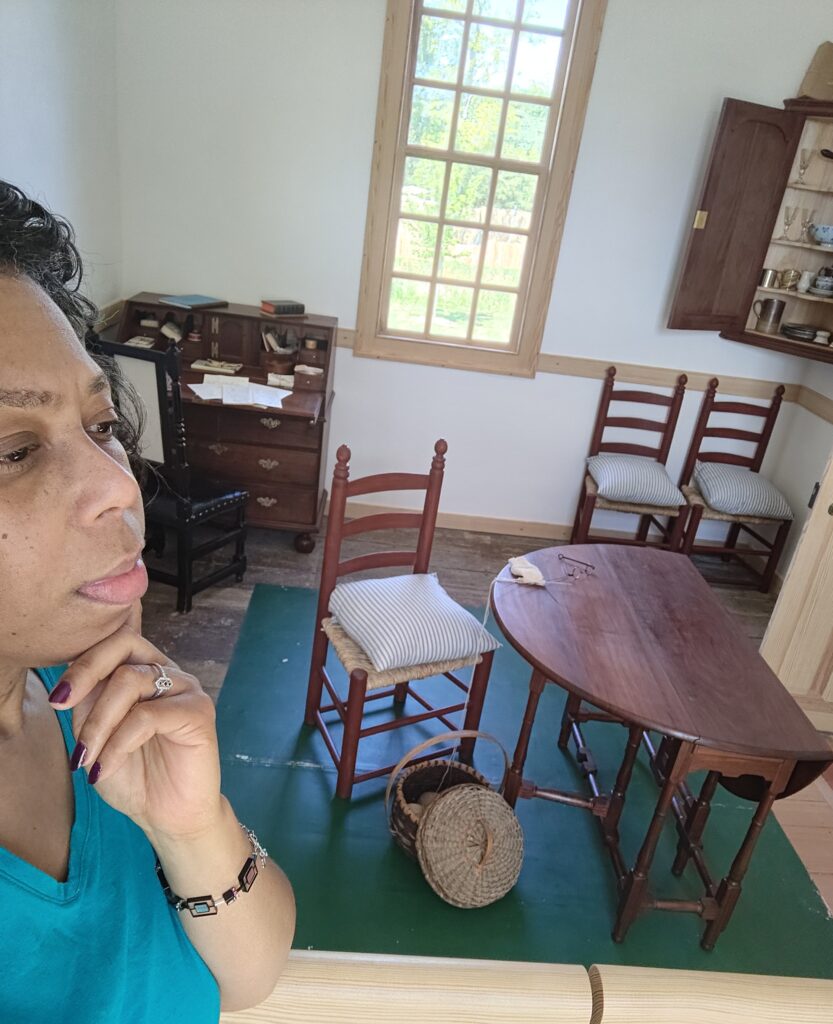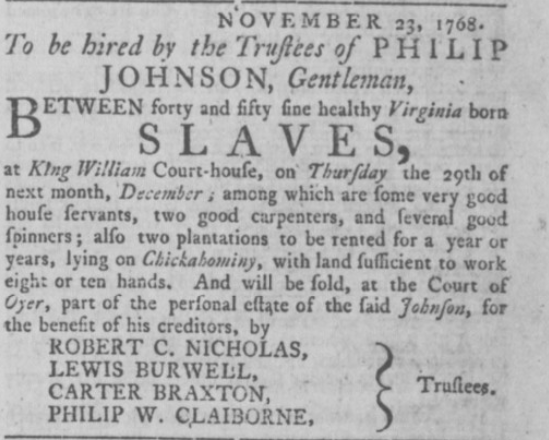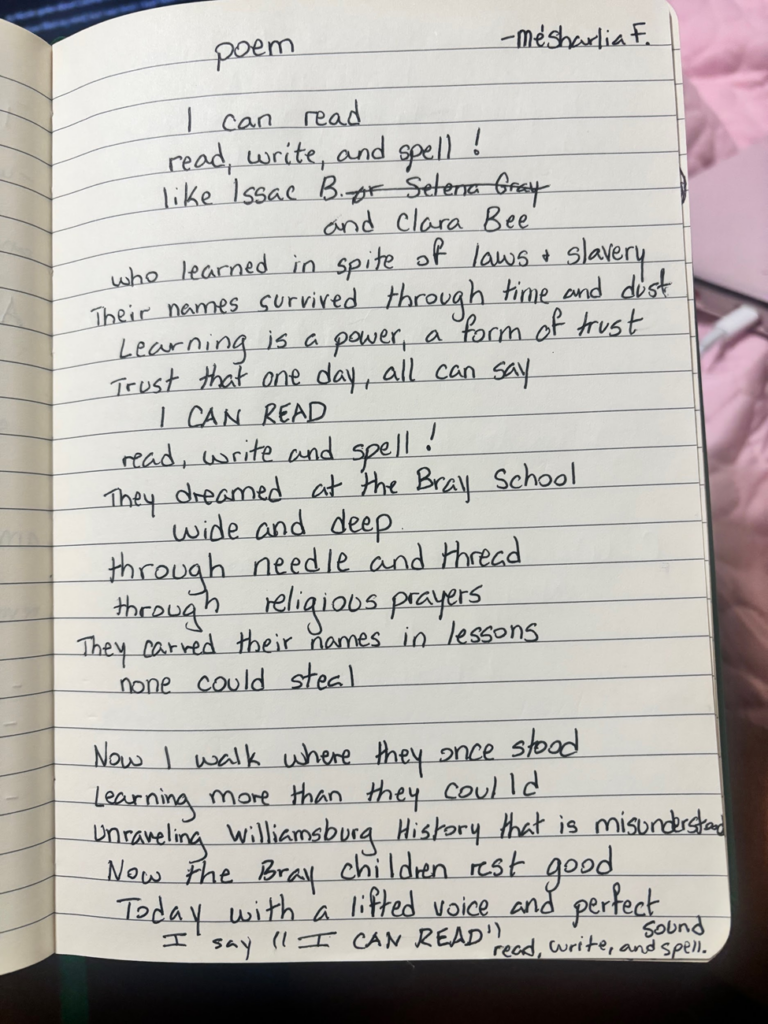by Juanita Graham

Since I graduated from William & Mary, a lot of information has been brought forth, via the college and Colonial Williamsburg, that pertains to the lives of persons of color. I appreciate the effort that has gone into expanding the general population’s knowledge about the often-overlooked people who worked and lived in the Williamsburg area.
As a person of color with a love for genealogy, I enjoy making connections between the past and the present, in order to bring enlightenment to the future. As a word artist, I also enjoy pulling words together to tell a story of those connections. After hearing Dr. Maureen Elgersman Lee present, “The Williamsburg Bray School and Its Scholars, 1760-1774,” on April 21,2025, my two joys of genealogy and writing collided. The result of the collision was a poem centered around the findings that were elaborated on during her engaging presentation. I entitled it, “My Musings of a Grown-up Bray School Scholar.”

The talk she gave stirred up a myriad of feelings, thoughts and questions for me, and as happens so often, my expression of all of those things came out in a poem. It reflects my feelings, thoughts and questions … spoken as the potential musings of a grown-up Bray School Scholar. In my imagination, I heard an adult Bray School Scholar speaking my thoughts. I heard my questions being asked and my feelings being expressed in the voice of a grown-up Hannah, George, Isaac Bee, Phoebe, Dolly, Edmund or Nancy. (These are just a few of the names of students that are recorded.) I don’t know for certain if they would have wanted to know all of the same things because I recognize my thoughts and questions have the influence of me being a Gen X’er, but I’d like to believe that perhaps they shared at least one of my musings.
My Musings of a Grown-Up Bray School Scholar
Juanita Graham – April 25, 2025
How I was viewed I came to learn,
Was based on who was looking and why.
The varied perspectives of how I was seen,
Changed with the mind that was behind the eye.
Pupil …
Child …
Chattel …
Experiment … so some tended to think.
Investment …
Resilience …
A soul and an ancestor …
With both a divine and genetic link.
As a pupil I was expected to learn,
Then to share what I knew.
But I was not expected to use my knowledge,
To elevate my station, or to expand my reasoning as I grew.
I was to study my letters
So, I could learn to read the prayers.
So that my soul could be saved,
And I could gain freedom … once I climbed the heavenly stairs.
Now, I was told I would stay enslaved,
My freedom wouldn’t be on this side.
Hence, I wasn’t to get no ideas about breaking free,
Because they would surely have my hide.
For you see, I was also considered to be chattel ...
Isn’t that strange ... to be "a possession" with a soul?
A soul worth saving, that was in a body not worth freeing -
Liberation wasn’t the goal.
Which made me wonder if teaching us about the Lord,
Was really about fulfilling a Christian obligation.
Or was it to indoctrinate and to foster dependency and gratitude,
Thus, intensifying the process of subjugation.
You know, I was also puzzled and would like to ask …
Why didn’t the spiritual messages apply to you too?
Because you definitely did unto me,
What I know you would not have allowed to be done unto you.
That's not to say the religious teaching
Didn't help in some valuable ways.
It helped give me strength to make it through.
It also helped me keep calm - reminding me ... God repays.
Now, don’t get me wrong,
There were some kind and compassionate people involved,
Who didn’t see me as a school experiment …
Or just as a return on investment issue to be resolved.
However, regardless of whether I was seen as a person … or not,
I rejected the contrived idea that my natural ordained condition was that of a slave.
I have always been a person with core-deep resiliency,
Who will have a legacy that will live long after I am buried in my grave.
I don’t know them,
But I know in the future there will be descendants connected to me,
Who will proudly embrace me for who I am,
Even celebrating that I am a part of their rich and layered ancestry.
So, as far as the return of investment goes,
By your criteria, I don't think it worked out so well for you.
But, by my standards of having my story live on,
It will be a future generation’s powerful blessing that will continue … and continue…and continue.
© Juanita Graham, 8/2025
Author Juanita Graham has a strong connection to the Williamsburg area. She is an Associate Minister at the historic First Baptist Church in Williamsburg, an alumna of William & Mary, a member of the Advisory Board for the Let Freedom Ring Foundation, a board member of the Williamsburg Book Festival, and the Director of Outreach Service for a local service-based non-profit organization.










